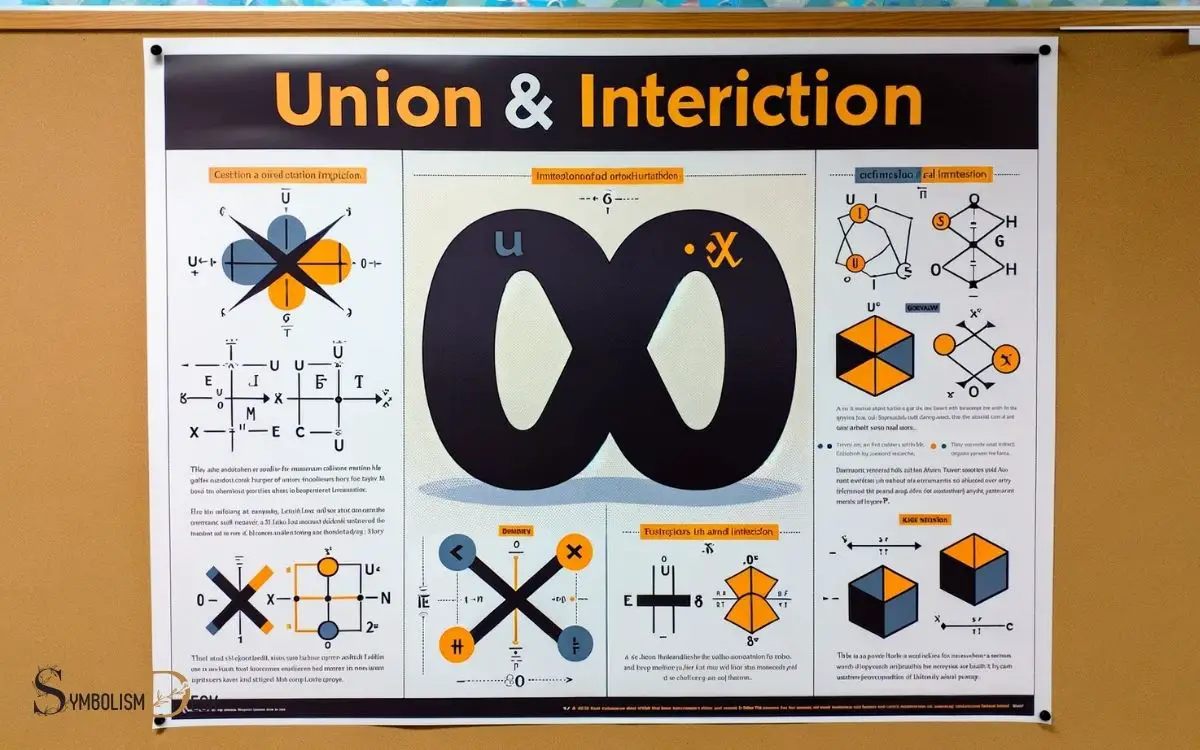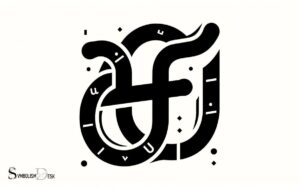Math Union and Intersection Symbols: Respectively!
The union symbol (∪) and the intersection symbol (∩) are fundamental mathematical notations used in set theory to represent the union and intersection of two sets, respectively.
The union of two sets, A and B, denoted as A ∪ B, is the set of elements that are in A, in B, or in both. The intersection of two sets, A and B, represented as A ∩ B, is the set of elements that are common to both A and B.
In set theory, the concepts of union and intersection help us understand how different sets relate to each other.
Here’s a simple example to illustrate:
The union (A ∪ B) would be the set {1, 2, 3, 4, 5} as it includes every distinct element from both sets. On the other hand, the intersection (A ∩ B) would be the set {3} because 3 is the only element that both sets have in common.
Key points include:
Understanding the union and intersection symbols is crucial for analyzing data sets and solving problems involving multiple groups or categories.

Key Takeaway
Set Theory and the Union Symbol
In set theory, the union symbol, denoted by the symbol ∪, represents the combination of all elements from two or more sets.
This means that when we take the union of sets A and B, denoted as A ∪ B, the result is a new set that contains all the unique elements from both set A and set B.
The union operation is inclusive, meaning that if an element is present in both sets, it will only appear once in the resulting union set.
In mathematical terms, the union of two sets A and B can be defined as the set of all elements that are in A, in B, or in both A and B. Understanding the union symbol is fundamental in various mathematical and logical operations.
Applications in Probability
The study of probability involves analyzing the likelihood of events occurring and their potential impact. Understanding the probability of events and scenarios where events overlap is crucial in various fields such as finance, statistics, and risk management.
By applying the concepts of union and intersection symbols, we can effectively calculate the probability of specific outcomes and make informed decisions based on the likelihood of certain events.
Probability of Events
Probability’s application in math involves determining the likelihood of events occurring within a given set of outcomes.
When calculating the probability of events, it’s essential to consider the total number of favorable outcomes and the total possible outcomes. This can be represented using the formula:
[ P(E) = ]
Where: – ( P(E) ) represents the probability of event E – ( n(E) ) represents the number of favorable outcomes – ( n(S) ) represents the total number of outcomes in the sample space
Consider the following example to understand the concept of probability better:
| Event | Favorable Outcomes (n(E)) | Total Possible Outcomes (n(S)) | Probability (P(E)) |
|---|---|---|---|
| A | 3 | 10 | 0.3 |
| B | 5 | 15 | 0.33 |
| C | 7 | 20 | 0.35 |
Overlapping Event Scenarios
In the context of probability, overlapping event scenarios involve the occurrence of events that share common outcomes.
When dealing with overlapping events, it’s essential to consider the shared outcomes to accurately calculate the probability of combined scenarios.
For instance, if event A and event B share common outcomes, the probability of A or B occurring is calculated as P(A) + P(B) – P(A and B), where P(A) and P(B) represent the individual probabilities and P(A and B) represents the probability of both A and B occurring.
Understanding overlapping event scenarios is crucial in various real-world applications, such as risk assessment, insurance pricing, and quality control.
By incorporating these concepts, individuals and organizations can make informed decisions based on the likelihood of concurrent or mutually exclusive events.
Properties of Union and Intersection
The properties of union and intersection involve fundamental mathematical operations that apply to sets. These properties include the commutative property of unions and the distributive property of intersections.
Understanding these properties is essential for effectively manipulating sets and solving various mathematical problems involving unions and intersections.
Commutative Property of Unions
Commutative property of unions refers to the mathematical principle that the order of sets being united does not affect the result. In set theory, this property states that for any sets A and B, the union of A and B is equal to the union of B and A, represented as A ∪ B = B ∪ A.
This property extends to any number of sets, meaning that the union of multiple sets remains the same regardless of the order in which the sets are combined.
Symbolically, if there are sets A, B, and C, then (A ∪ B) ∪ C = (B ∪ A) ∪ C = (C ∪ B) ∪ A, and so on. The commutative property of unions is a fundamental concept in set theory and is essential in various areas of mathematics and computer science.
Distributive Property of Intersections
The distributive property of intersections in set theory defines the relationship between the intersection of sets A and the union of sets B and C as A ∩ (B ∪ C) = (A ∩ B) ∪ (A ∩ C).
This property illustrates how intersections and unions interact with each other in set theory, allowing for the distribution of the intersection over the union or vice versa.
To better understand this concept, consider the following visual representation:
- A ∩ (B ∪ C)
- The intersection of set A and the union of sets B and C
- (A ∩ B) ∪ (A ∩ C)
- The union of the intersection of sets A and B with the intersection of sets A and C
This property is fundamental in set theory and plays a crucial role in various mathematical proofs and applications.
Venn Diagrams and Set Operations
Utilize Venn diagrams to visually represent the relationships between sets and demonstrate set operations in a clear and concise manner.
Venn diagrams are powerful tools for illustrating the relationships between sets and the outcomes of set operations such as union, intersection, and complement.
These diagrams consist of overlapping circles, each representing a set, with the overlapping regions showing the elements that belong to both sets.
By using Venn diagrams, one can clearly visualize how different set operations affect the elements within the sets, making it easier to understand the outcomes of these operations.
Additionally, Venn diagrams provide a practical way to illustrate the distributive property of set operations.
Understanding how to construct and interpret Venn diagrams is crucial for mastering set theory and its applications in various fields.
Real-World Examples and Exercises
To further enhance comprehension of set operations and their practical applications, real-world examples and exercises will be presented, building upon the foundational understanding established through Venn diagrams and set operations.
Real-World Examples:
- In a store, the union of two sets could represent customers who bought either product A or product B, while the intersection could represent those who bought both.
- When scheduling classes, the union of two sets could represent students available on either Monday or Wednesday, while the intersection could represent those available on both days.
Exercises:
- Given two sets representing different car models and their features, find the union and intersection to compare the common and unique attributes.
- In a survey of favorite fruits, use set operations to analyze the overlap and differences between the preferences of two groups.
Conclusion
The union and intersection symbols play a crucial role in set theory and have practical applications in probability and real-world scenarios. Understanding their properties and applications can help us analyze and solve complex problems.
Just as these symbols intersect and unite sets in mathematics, they also intersect and unite our understanding of the world, allowing us to see connections and relationships that may not be immediately apparent.






